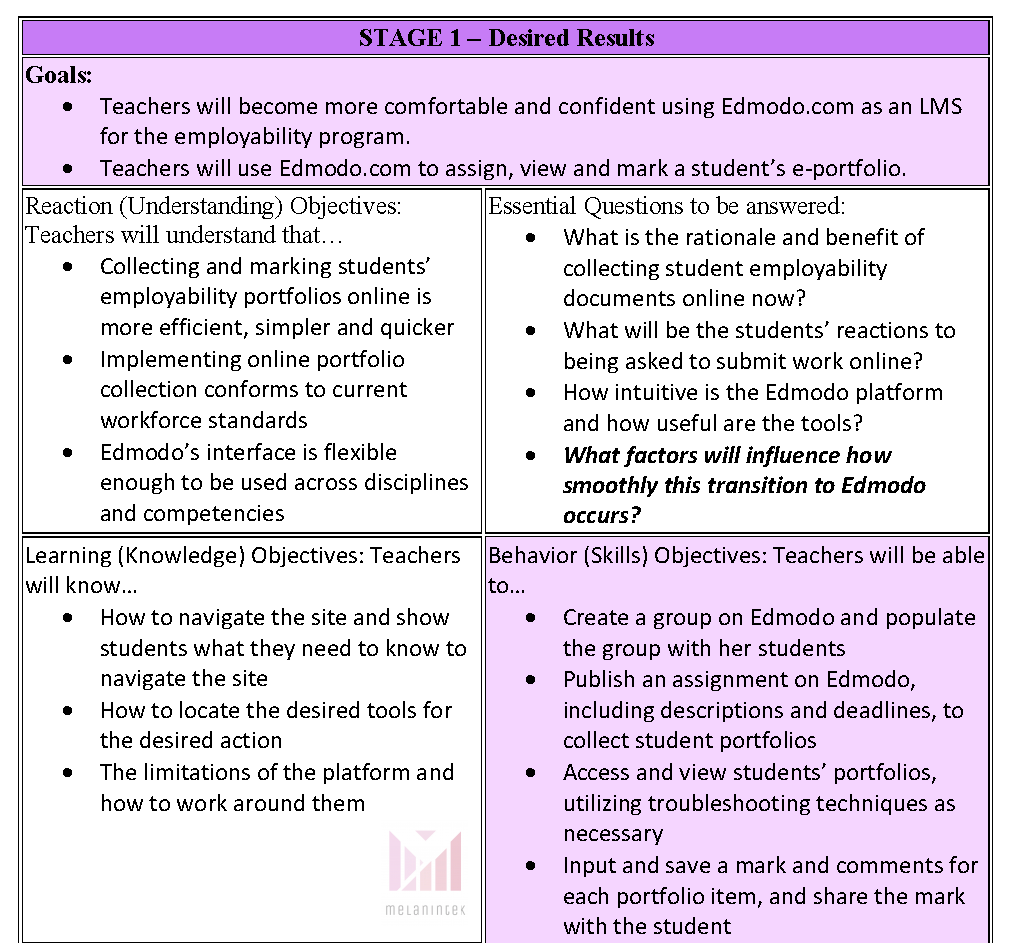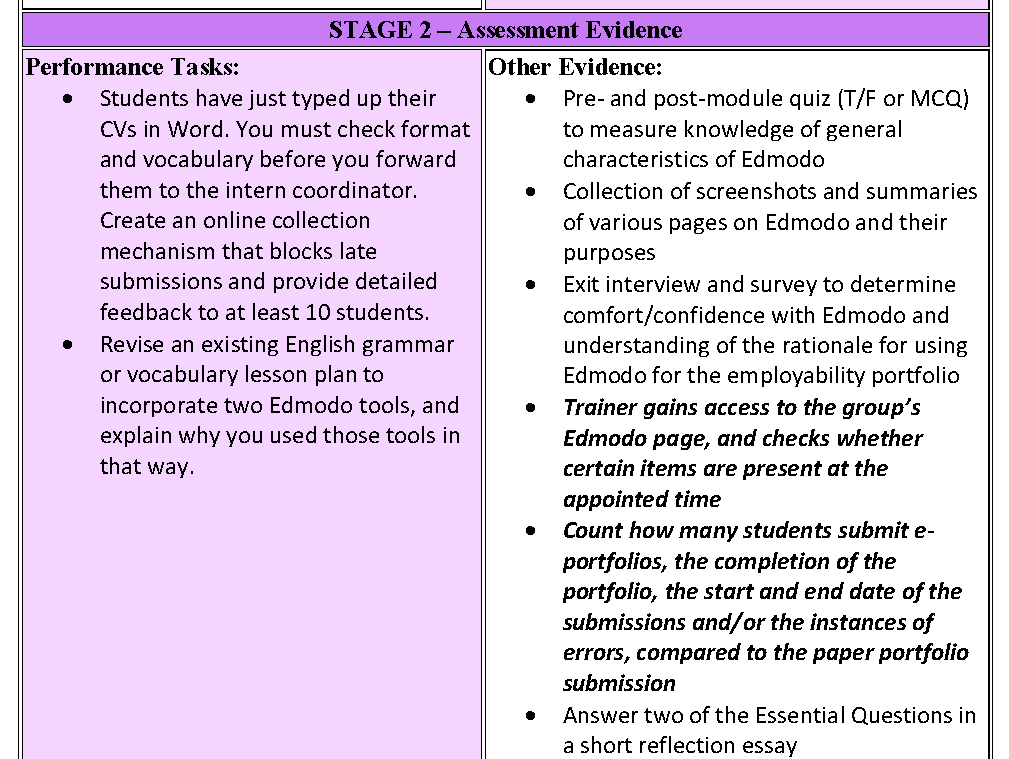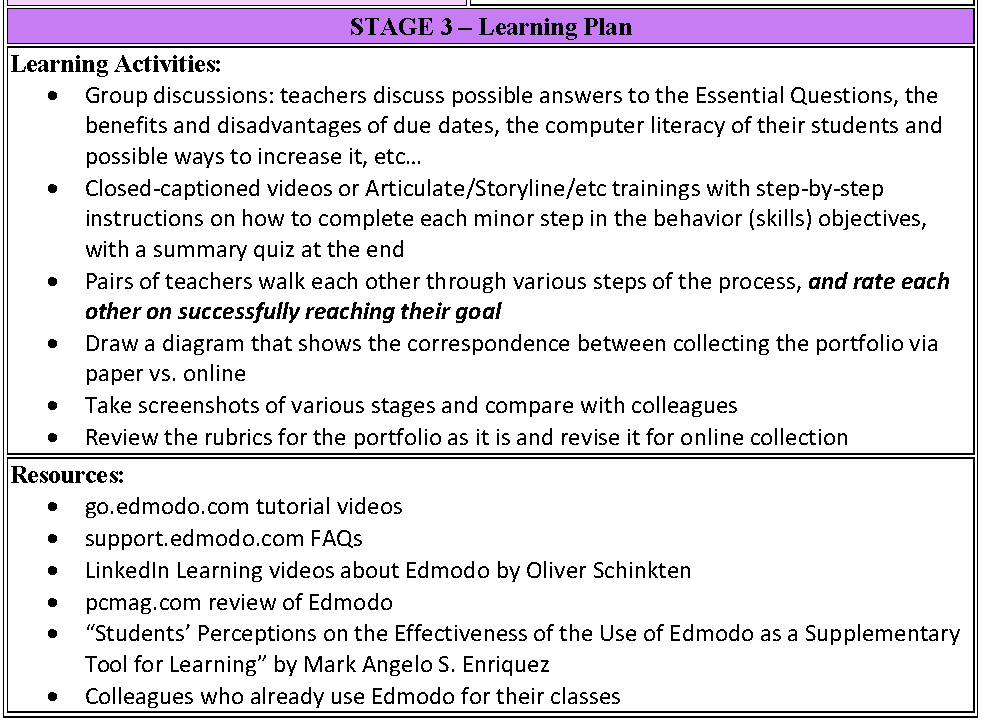ID Process: Backwards Design Plan
A generation ago, this order of operations might have been balked at. However, once I understood what the sections meant and why they fit together, I found designing my course “backwards” and using Wiggins & McTighe’s template for UbD very insightful, not only as a tool to plan assessments, but the learning itself. This planning model’s main focus is the assessment, and by focusing on assessment, getting learners to change their behavior and figuring out ways to observe that change.

The fact that the “Desired Results” comes first indicates their precedence in the process. Recalling Kirkpatrick, his advice is to begin with figuring out how to get measurable and evidential Results. When using this template, our eyes and thoughts are always on the Desired Results, even as we think about the “Evidence” for them and the “Learning Plan” towards them.

This template also helps with deciding on learning methods because after naming exactly what we want learners to do, we can design activities that very closely align with or mimic those skills or concepts. As trainers, we can visualize the gaps, and scaffold the progression appropriately. Learning methods are also informed by the many learning domain models available, which easily fit into the Backwards planning process. These learning domains provide us with ideas for how to measure those results, and ideas for the activities we can use to get to the results.
We can triangulate UbD, learning domains and our context to find the most efficient paths toward success.

Let’s talk education.
There has been a backlash to the idea of thinking too much about assessments, at least in k-12 in the States. There are movements to get rid of standardized tests or at least not weigh them so heavily when determining a student’s overall academic success. Teachers (and students and parents) sometimes rebel against “teaching to the test.” I understand and sympathize. Education goes through cycles of revelation and innovation and stagnation, and it’s very possible that k-12 had stagnated in terms of not stepping up to the challenges of the 21st century and a swiftly changing demographic. Raw information, or facts and figures we used to have to memorize, are at the tips of our fingers, so there’s no reason to memorize them. Big Tech is sidelining formal degrees and micro certificates are all the rage.
Before, The Test had intrinsic validity, but it also had fairness and equity shortcomings that had been ignored for too long. Now, these assessments aren’t deemed fit even on the most basic terms, and that is a major problem for k-12.
Thinking like an assessor can be a good thing again.
The disconnect between assessors and teachers must be corrected, or there will always be an uprising in the end. For teachers to think like assessors, they need to be brought in and trained to do so. As we’ve already seen, just giving them the assessment isn’t enough. Assessors also need to understand the teachers’ situations, and make assessments that honor the context in which they’ll be administered and the lifelong goals for which students are aiming.
Corporate training typically does not have this particular disconnect, and in a perfect world of k-12, the assessor and teacher are the same, but that often isn’t the case. We need to find a way to compensate both sides to achieve this unity. UbD, I feel, would be a welcome tool in the teacher’s toolbox.

Leave a Reply
You must be logged in to post a comment.